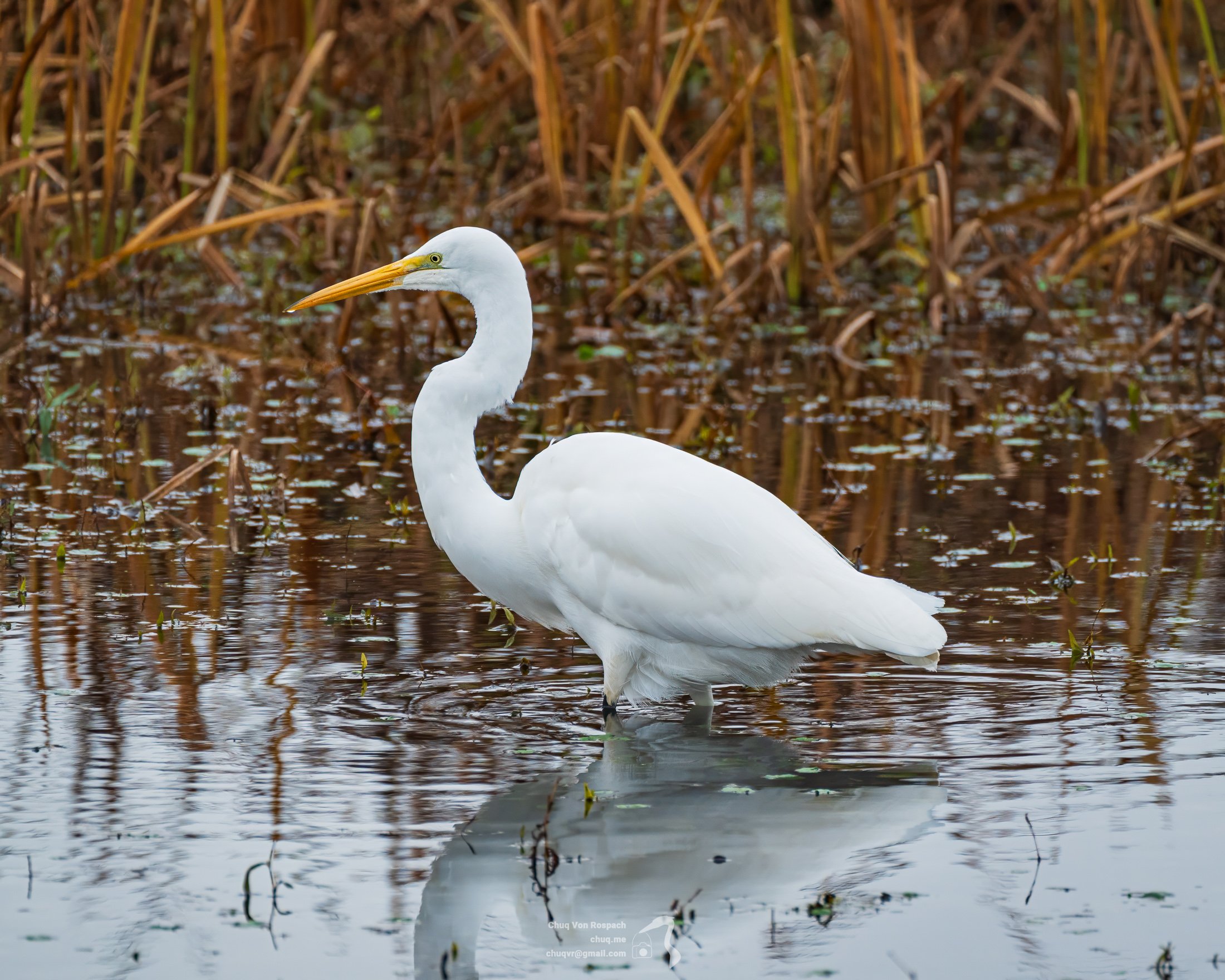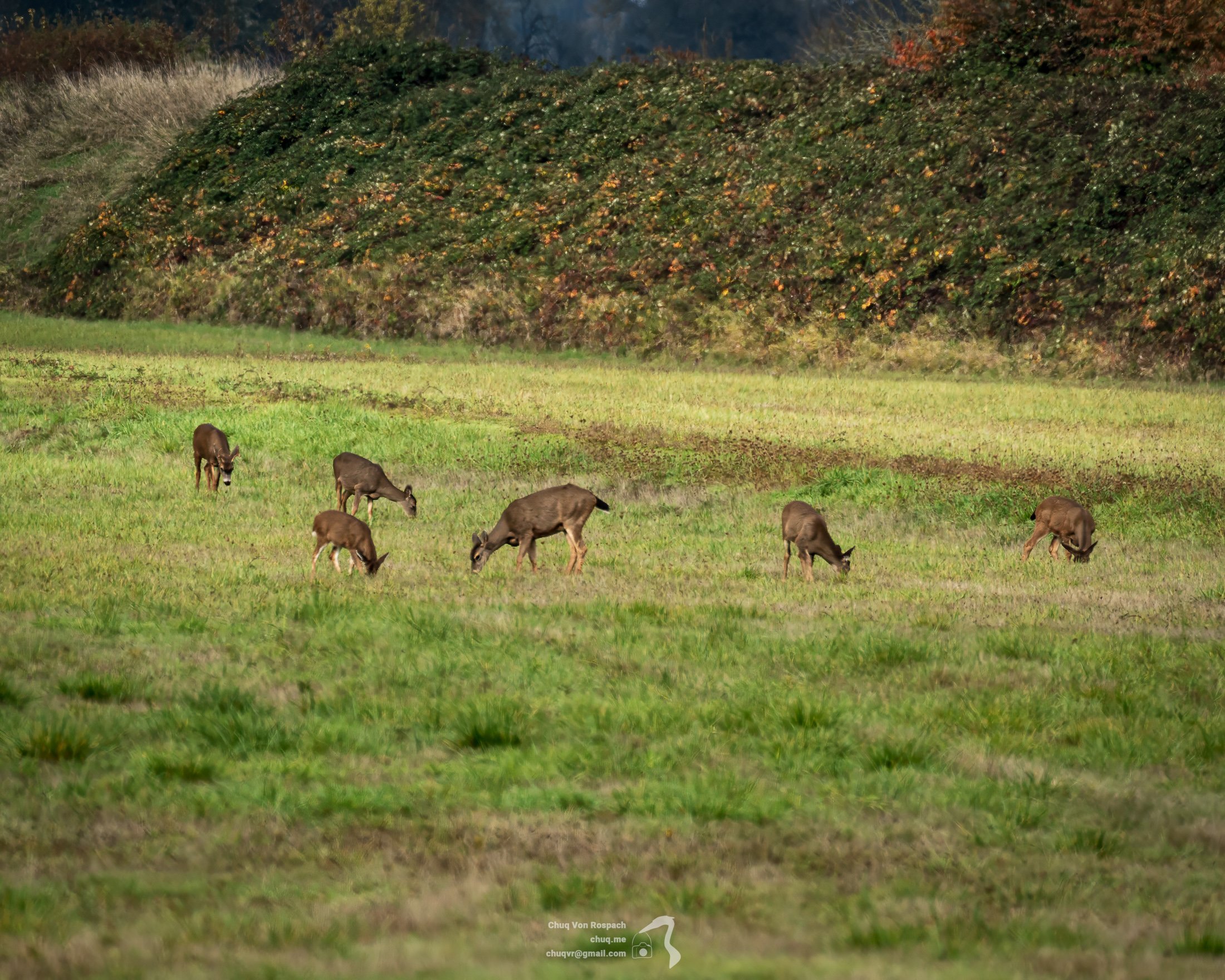Ridgefield National Wildlife Refuge
One of the things that’s been on my “I really need to get this going” list since moving to Washington has been to start visiting Ridgefield National Wildlife Refuge, which is about 2 and a half hours drive from here. It is the closest equivalent to my much beloved Merced NWR that I spent so many days birding and photographing in over the years.
So on the 8th, I got up early, drove down to the refuge and spent a few wonderful hours there getting to know the place better and doing some birding and photography.
I won’t go into detail about why I love Merced and these wildlife refuges in general — if you’re interested, I did an entire ebook on Merced which you can download off my E-books page. But I love these locations and the birds they support, and with my bad knees, the auto tour aspect makes hem more accessible to me and my photography.
The round trip distance was around 350 miles, about 5 hours of driving. I ended up spending a bit under 3 hours at the refuge, making two trips around the tour. This puts Ridgefield at about the same distance as Sacramento NWR was from my home in Silicon Valley, and that’s about the longest distance I’m willing to day trip. Merced was only 90 minutes away, but I found the drive to Ridgefield less tiring than the one up to Sacramento, which included Altamont Pass and more of the grinding California traffic.
The two closest refuges to here are the Billy J Frank NWR near Olympia, and the Dungeness NWR near Sequim, both about 90 minutes away, but both refuges that are primarily walking trails. I’ve been to Billy J Frank and want to explore it more, but it’s rough on my knees so I haven’t explored it much yet. The Dungeness NWR has been on my “go take a look” list for a while but I haven’t gotten there yet. I need to do that soon.
At a refuge like Ridgefield or Merced, they’ve created a drivable gravel roadway, and you travel through the refuge in the car; in fact, you’re not supposed to exit the car except at specific locations where there might be a trail you can walk. The car will act as a blind, so the birds won’t move away from you as far. Of course, this restriction is not always strictly followed, even by me. When I was leading groups at Merced, we would sometimes get out so we could use the spotting scope and discuss what we were seeing, but the general rule was “you can touch the car”.
I’m asked a lot how I got some of the photos I’ve taken over the years, and the answer, honestly, is most of the time “time and patience (and a bit of luck)”. Most people move too fast; show up, look around, snap a couple of shots and move on. Often my best shots happen because I sit in a place and watch, quiet and not moving around much, until the birds and animals forget I’m there and move closer. And unfortunately, I can’t count how often I’d been sitting staking out something at one of the refuges for 30+ minutes, only to have someone drive up, pop out, make lots of noise and arm-moving-pointing movements, and then get back in the car and roar away, in a hurry to the next stop. And leaving me with the shot I’d been setting up ruined. But.. Oh well. I’m actually happy to see families out enjoying and learning about these places, because if we don’t get the younger people to care about them, will they continue to exist? I’ll take the occasional ruined shot.
This trip to Ridgefield was early in the season; I don’t know the refuge well, as I’ve only been there a few times in the past, but the way these refuges are managed are pretty similar. Refuges are now “wilderness” in any way; they are created habitats that are carefully managed to support the birds and wildlife that otherwise would struggle to find places to stay given how much of their habitat we’ve destroyed — the origin of these refuges was to create places for the migrating birds to have because they were using farmland and damaging crops, because we basically gave them no alternative.
A typical day at the refuge
I have a routine for visiting a refuge like Ridgefield. I’ll typically travel the auto tour route at least twice. The first time, I’m looking for the most interesting and active locations, so I’m moving relatively quickly, but stopping when I think it makes sense. A reason for this is that you really don’t want to spend a lot of time trying to pull good images out of a distant flock only to turn a corner and find the birds 50’ away from the road. So the first time through is about both scouting to see where the activity is and spending some time shooting and studying the most active locations.
The second trip I’ll slow down, focus time on the active locations (which, of course, sometimes change in between trips!), but also put some effort into locations where I think it’s likely I’ll find some interesting birds; on this visit, on the second trip I stopped in some of the wooded areas the road goes through, and it rewarded me with a Brown Creeper and two woodpeckers: Downy Woodpecker and Red-Breasted Sapsucker.
After the second trip through, what I do next depends on what’s going on. Sometimes I’ll take a break and then make another trip (or two) through the refuge, specifically chasing specific species or locations. On this trip, I felt like I’d pretty much gotten what I could out of it, so I called it and headed home — the 2+ hour drive home influenced this decision, of course.
My day at the refuge
I left the house about 7:30AM, and arrived at the refuge around 10:15. I circled the tour twice, ending the second trip around 1PM. I didn’t think a third trip round was going to add significantly to what I had, so I headed out for lunch and the drive home, arriving back at the house a bit before 4.
I ended up with 38 species on the day, 9 of those new additions on the second trip around. My main target was Sandhill Crane, which didn’t disappoint, and also Cackling Goose. There weren’t large numbers of Cranes there that day, under 100, and larger numbers of the Cacklers. This early in the season I wasn’t expecting much in terms of the white geese (Snow and Ross’s), but I did run into a single snow goose. While Greater-white-fronted Geese are being seen, I didn’t find them this trip.
Overall, 38 species seems a good number for a visit, and I’m happy with my birding there. Laurie and I are talking about going back together, probably around New Years, when the refuge should be in full swing. It was still fairly low in duck numbers, and there were clearly areas of habitat prepared but not yet flooded; early November is when the refuge starts waking up and the birds start arriving, but there should be much more diversity and higher numbers in a month.
Overall, a very successful day trip.
Photography at the refuge
This was my first opportunity to get to the refuge since shifting from Fuji to Sony gear, and it did not disappoint. I continue to love how much better the Sony autofocus is.
I ended up shooting 1068 images while at the refuge; this is a fairly typical number for me on this kind of visit. I know a lot of photographers freak at the thought of going through that many images, but with a bit of practice you can do so efficiently. I will cull the photos in stages. Since I shoot in burst mode, a lot of the images are more or less duplicates of each other, so the initial cull is where I go through each burst and find the best and unique images out of each; you don’t need (or want) 15 shots of a bird with identical positioning, so go through, find the unique looks and archive the rest. In my first cull, I pared the number of images from 1068 to 105, and that took 20 minutes.
The second cull is where I start making more critical evaluation of the images, and I’ll starting doing some of the basic processing, so I can see the images closer to their final look. Sometimes an image with potential shows up flaws not worth fixing, or isn’t as sharp as I hope, or when comparing the same species across multiple bursts of images I’ll find some that are too similar, and I’ll cull the weaker images. The overall goal is not to see how many good images I can keep, but how few images show off what I saw on the trip in terms of interesting situations, unique postures and specific species. You don’t need 25 images that are virtual clones of each other, pick the one you think is best and cull out the rest.
The second cull reduced the number of selects from 105 to 43 and with the processing I did, took about 40 minutes.
The third cull I do is where I get really picky and go over each image and finish the processing. At this point I’m making final edits and final decisions and trying to remove weaker images that bring down the quality of the entire batch. For this cull, I removed another 8 images and it took 10 minutes, leaving me with 35 shots or about 3% of the entire shoot. This isn’t unusual for a day of shooting like this.
Once I’m done with the third cull, I do my keywording and metadata like captions and titles. I tend to be spartan here: location and species are my primary aspects since those are the things I care about when searching for things later. This took me 15 minutes.
At that point, I send off those 35 images to Topaz Photo AI to do the sharpening and noise reduction for me, which took me about 5 minutes, and I go do something else while it batch processes, which took about 10 minutes.
Once that is done, I can export the final images and do a bit of housekeeping (ratings, etc), and once I have exported jpegs (exported at 90% quality, 2200pixels on the long edge), I’m done processing. I do one final review of these exported images, and in this case, I found three that I didn’t feel sharpened well, and I culled them (they were weaker images not worth putting more time in).
So to process over 1000 images from a day’s shoot to a final selection of 32 images took me 90 minutes of hands-on time, plus about 10 minutes of batch time.
The culls, by the way, get stored away for now. In 2-3 months I’ll pull them out and do a second review to look for images I overlooked initially. To be honest, I rarely pull something out of the culled images — it’s happened 11 times over the years through tens of thousands of images — but those 11 make putting that few minutes in for a second look worth doing. Once I’m done with that second review in a few months, I’ll delete the culled images forever.
Sandhill Cranes
A primary target species for me is Sandhill Crane, a personal favorite. There weren’t a lot of them visible — I counted about 40 in various groups — but there were a couple of groups that were nice and close to the road and not worried about the gaggle of photographers in cars sticking lenses out at them. The group included one immature bird from this year’s crop as well, which was nice.
Great Egret
There were a few Great Egrets around the refuge, and a couple offered some nice photography. Since I’ve upgraded to the Sony gear and my images of many species are older, I am keeping more images right now than I might to help update and modernize my collection for species like this and the cranes.
Other Birds
I also was able to get photos of a number of other species; Cackling Goose was the most common, but also Great Blue Heron, Killdeer, various Ducks and a few nice hawks like American Kestrel.
Bonus finds
On the trip, I ran into a couple of neat things. First, a lousy shot of a cackling goose sporting a neck band. These bands are part of a research project, and if you run into one, it helps to report them, to the Bird Banding Lab, which is a clearing house that will get the sighting back to the researcher. In this case, the image isn’t good enough to extract the number off the band, but the band color (red) and number color (yellow) will track it back to a specific study and allow the researcher to see where one of the birds they banded ended up after migration. Sometime in the future, I’ll probably get an update telling me when and where this bird was banded, too.
And the other neat thing I ran into was this very young Coyote. It’s the time of year where the kids start getting kicked out of the den and begin life on their own. This one was completely ignoring the cars around it, and working its way up the roadway, occasionally stopping and pounce hunting something, although I didn’t see it catch something while I was watching. And yes, I missed focus on it, but I don’t care, it’s still a great moment.
There were also black-tailed deer in multiple locations around the refuge.
































